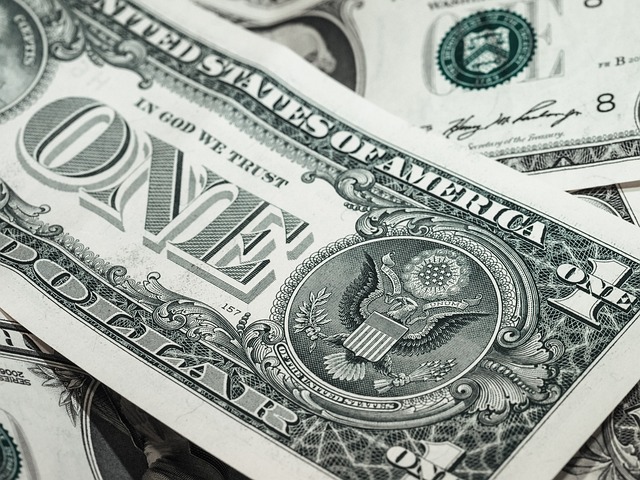How to build an AI crypto trading bot with custom GPTs
AI is transforming how people interact with financial markets, and cryptocurrency trading is no exception. With tools like OpenAI’s Custom GPTs, it is now possible for beginners and enthusiasts to create intelligent trading bots capable of analyzing data, generating signals and even executing trades.This guide analyzes the fundamentals of building a beginner-friendly AI crypto trading bot using Custom GPTs. It covers setup, strategy design, coding, testing and important considerations for safety and success.What is a custom GPT?A custom GPT (generative pretrained transformer) is a personalized version of OpenAI’s ChatGPT. It can be trained to follow specific instructions, work with uploaded documents and assist with niche tasks, including crypto trading bot development.These models can help automate tedious processes, generate and troubleshoot code, analyze technical indicators and even interpret crypto news or market sentiment, making them ideal companions for building algorithmic trading bots.What you’ll need to get startedBefore creating a trading bot, the following components are necessary:OpenAI ChatGPT Plus subscription (for access to GPT-4 and Custom GPTs).A crypto exchange account that offers API access (e.g., Coinbase, Binance, Kraken).Basic knowledge of Python (or willingness to learn).A paper trading environment to safely test strategies.Optional: A VPS or cloud server to run the bot continuously.Did you know? Python’s creator, Guido van Rossum, named the language after Monty Python’s Flying Circus, aiming for something fun and approachable.Step-by-step guide to building an AI trading bot with custom GPTsWhether you’re looking to generate trade signals, interpret news sentiment or automate strategy logic, the below step-by-step approach helps you learn the basics of combining AI with crypto trading. With sample Python scripts and output examples, you’ll see how to connect a custom GPT to a trading system, generate trade signals and automate decisions using real-time market data.Step 1: Define a simple trading strategyStart by identifying a basic rule-based strategy that is easy to automate. Examples include:Buy when Bitcoin’s (BTC) daily price drops by more than 3%.Sell when RSI (relative strength index) exceeds 70.Enter a long position after a bullish moving average convergence divergence (MACD) crossover.Trade based on sentiment from recent crypto headlines.Clear, rule-based logic is essential for creating effective code and minimizing confusion for your Custom GPT.Step 2: Create a custom GPTTo build a personalized GPT model:Visit chat.openai.comNavigate to Explore GPTs > CreateName the model (e.g., “Crypto Trading Assistant”)In the instructions section, define its role clearly. For example:“You are a Python developer specialized in crypto trading bots.”“You understand technical analysis and crypto APIs.”“You help generate and debug trading bot code.”Optional: Upload exchange API documentation or trading strategy PDFs for additional context.Step 3: Generate the trading bot code (with GPT’s help)Use the custom GPT to help generate a Python script. For example, type:“Write a basic Python script that connects to Binance using ccxt and buys BTC when RSI drops below 30. I am a beginner and don’t understand code much so I need a simple and short script please.”The GPT can provide:Code for connecting to the exchange via API.Technical indicator calculations using libraries like ta or TA-lib.Trading signal logic.Sample buy/sell execution commands.Python libraries commonly used for such tasks are:ccxt for multi-exchange API support.pandas for market data manipulation.ta or TA-Lib for technical analysis.schedule or apscheduler for running timed tasks.To begin, the user must install two Python libraries: ccxt for accessing the Binance API, and ta (technical analysis) for calculating the RSI. This can be done by running the following command in a terminal:pip install ccxt taNext, the user should replace the placeholder API key and secret with their actual Binance API credentials. These can be generated from a Binance account dashboard. The script uses a five-minute candlestick chart to determine short-term RSI conditions.Below is the full script:====================================================================import ccxtimport pandas as pdimport ta# Your Binance API keys (use your own)api_key = ‘YOUR_API_KEY’api_secret = ‘YOUR_API_SECRET’# Connect to Binanceexchange = ccxt.binance({ ‘apiKey’: api_key, ‘secret’: api_secret, ‘enableRateLimit’: True,})# Get BTC/USDT 1h candlesbars = exchange.fetch_ohlcv(‘BTC/USDT’, timeframe=’1h’, limit=100)df = pd.DataFrame(bars, columns=[‘timestamp’, ‘open’, ‘high’, ‘low’, ‘close’, ‘volume’])# Calculate RSIdf[‘rsi’] = ta.momentum.RSIIndicator(df[‘close’], window=14).rsi()# Check latest RSI valuelatest_rsi = df[‘rsi’].iloc[-1]print(f”Latest RSI: {latest_rsi}”)# If RSI < 30, buy 0.001 BTCif latest_rsi < 30: order = exchange.create_market_buy_order(‘BTC/USDT’, 0.001) print(“Buy order placed:”, order)else: print(“RSI not low enough to buy.”)====================================================================Please note that the above script is intended for illustration purposes. It does not include risk management features, error handling or safeguards against rapid trading. Beginners should test this code in a simulated environment or on Binance’s testnet before considering any use with real funds.Also, the above code uses market orders, which execute immediately at the current price and only run once. For continuous trading, you’d put it in a loop or scheduler.Images below show what the sample output would look like:The sample output shows how the trading bot reacts to market conditions using the RSI indicator. When the RSI drops below 30, as seen with “Latest RSI: 27.46,” it indicates the market may be oversold, prompting the bot to place a market buy order. The order details confirm a successful trade with 0.001 BTC purchased. If the RSI is higher, such as “41.87,” the bot prints “RSI not low enough to buy,” meaning no trade is made. This logic helps automate entry decisions, but the script has limitations like no sell condition, no continuous monitoring and no real-time risk management features, as explained previously.Step 4: Implement risk managementRisk control is a critical component of any automated trading strategy. Ensure your bot includes:Stop-loss and take-profit mechanisms.Position size limits to avoid overexposure.Rate-limiting or cooldown periods between trades.Capital allocation controls, such as only risking 1–2% of total capital per trade.Prompt your GPT with instructions like:“Add a stop-loss to the RSI trading bot at 5% below the entry price.”Step 5: Test in a paper trading environmentNever deploy untested bots with real capital. Most exchanges offer testnets or sandbox environments where trades can be simulated safely.Alternatives include:Running simulations on historical data (backtesting).Logging “paper trades” to a file instead of executing real trades.Testing ensures that logic is sound, risk is controlled and the bot performs as expected under various conditions.Step 6: Deploy the bot for live trading (Optional)Once the bot has passed paper trading tests:Replace test API keys: First, replace your test API keys with live API keys from your chosen exchange’s account. These keys allow the bot to access your real trading account. To do this, log in to exchange, go to the API management section and create a new set of API keys. Copy the API key and secret into your script. It is crucial to handle these keys securely and avoid sharing them or including them in public code.Set up secure API permissions (disable withdrawals): Adjust the security settings for your API keys. Make sure that only the permissions you need are enabled. For example, enable only “spot and margin trading” and disable permissions like “withdrawals” to reduce the risk of unauthorized fund transfers. Exchanges like Binance also allow you to limit API access to specific IP addresses, which adds another layer of protection.Host the bot on a cloud server: If you want the bot to trade continuously without relying on your personal computer, you’ll need to host it on a cloud server. This means running the script on a virtual machine that stays online 24/7. Services like Amazon Web Services (AWS), DigitalOcean or PythonAnywhere provide this functionality. Among these, PythonAnywhere is often the easiest to set up for beginners, as it supports running Python scripts directly in a web interface.Still, always start small and monitor the bot regularly. Mistakes or market changes can result in losses, so careful setup and ongoing supervision are essential.Did you know? Exposed API keys are a top cause of crypto theft. Always store them in environment variables — not inside your code.Ready-made bot templates (starter logic)The templates below are basic strategy ideas that beginners can easily understand. They show the core logic behind when a bot should buy, like “buy when RSI is below 30.” Even if you’re new to coding, you can take these simple ideas and ask your Custom GPT to turn them into full, working Python scripts. GPT can help you write, explain and improve the code, so you don’t need to be a developer to get started. In addition, here is a simple checklist for building and testing a crypto trading bot using the RSI strategy:Just choose your trading strategy, describe what you want, and let GPT do the heavy lifting, including backtesting, live trading or multi-coin support.RSI strategy bot (buy Low RSI)Logic: Buy BTC when RSI drops below 30 (oversold).if rsi < 30: place_buy_order()Used for: Momentum reversal strategies.Tools: ta library for RSI.2. MACD crossover botLogic: Buy when MACD line crosses above signal line.if macd > signal and previous_macd < previous_signal: place_buy_order()Used for: Trend-following and swing trading.Tools: ta.trend.MACD or TA-Lib.3. News sentiment botLogic: Use AI (Custom GPT) to scan headlines for bullish/bearish sentiment.if “bullish” in sentiment_analysis(latest_headlines): place_buy_order()Used for: Reacting to market-moving news or tweets.Tools: News APIs + GPT sentiment classifier.Risks concerning AI-powered trading botsWhile trading bots can be powerful tools, they also come with serious risks:Market volatility: Sudden price swings can lead to unexpected losses.API errors or rate limits: Improper handling can cause the bot to miss trades or place incorrect orders.Bugs in code: A single logic error can result in repeated losses or account liquidation.Security vulnerabilities: Storing API keys insecurely can expose your funds.Overfitting: Bots tuned to perform well in backtests may fail in live conditions.Always start with small amounts, use strong risk management and continuously monitor bot behavior. While AI can offer powerful support, it’s crucial to respect the risks involved. A successful trading bot combines intelligent strategy, responsible execution and ongoing learning.Build slowly, test carefully and use your Custom GPT not just as a tool — but also as a mentor.
NFT trader faces prison for $13M tax fraud on CryptoPunk profits
A non-fungible token (NFT) trader could face up to six years in prison after pleading guilty to underreporting nearly $13 million in profits from trading CryptoPunks, according to the US Attorney’s Office for the Middle District of Pennsylvania.Waylon Wilcox, 45, admitted to filing false income tax returns for the 2021 and 2022 tax years. The former CryptoPunk investor pleaded guilty on April 9 to two counts of filing false individual income tax returns, federal prosecutors said in an April 11 press release.Back in April 2022, Wilcox filed a false individual income tax return for the tax year 2021, which underreported his income tax by roughly $8.5 million and reduced his tax due by approximately $2.1 million.In October 2023, Wilcox filed another false individual tax income return for the fiscal year of 2022, underreporting his income tax by an estimated $4.6 million and reducing his tax due by nearly $1.1 million.Wilcox pleads guilty to false tax filing, press release. Source: Attorney’s Office for the Middle District of Pennsylvania“The total maximum penalty under federal law for these offenses is up to six years of imprisonment, a term of supervised release following imprisonment, and a fine,” according to the statement. However, the exact details and timing of his sentence remain unclear.Related: NFT trader sells CryptoPunk after a year for nearly $10M lossThe trader bought and sold 97 pieces of the CryptoPunk NFT collection, the industry’s largest NFT collection, with a $687 million market capitalization.Source: CryptoPunksIn 2021, Wilcox sold 62 CryptoPunk NFTs for a gain of about $7.4 million but reported significantly less on his taxes. In 2022, he sold 35 more CryptoPunks for $4.9 million. The Department of Justice said Wilcox intentionally selected “no” when asked if he had engaged in digital asset transactions on both filings.“IRS Criminal Investigation is committed to unraveling complex financial schemes involving virtual currencies and NFT transactions designed to conceal taxable income,” Philadelphia Field Office Special Agent in charge Yury Kruty said, adding: “In today’s economic environment, it’s more important than ever that the American people feel confident that everyone is playing by the rules and paying the taxes they owe.” The case was investigated by the Internal Revenue Service (IRS) and the Criminal Investigation Department.Related: CZ claps back against ‘baseless’ US plea deal allegationsCrypto tax rules gain tractionCrypto tax laws attracted interest worldwide in June 2024 after the IRS issued a new crypto regulation making US crypto transactions subject to third-party tax reporting requirements for the first time.Since January, centralized crypto exchanges (CEXs) and other brokers have been required to report the sales and exchanges of digital assets, including cryptocurrencies.On April 10, US President Donald Trump signed a joint congressional resolution to overturn a Biden administration-era legislation that would have required decentralized finance (DeFi) protocols to also report transactions to the IRS.Set to take effect in 2027, the so-called IRS DeFi broker rule would have expanded the tax authority’s existing reporting requirements to include DeFi platforms, requiring them to disclose gross proceeds from crypto sales, including information regarding taxpayers involved in the transactions.However, some crypto regulatory advisers believe that stablecoin and crypto banking legislation should be a priority above new tax legislation in the US.A “tailored regulatory approach” for areas including securities laws and removing “obstacles in banking” is a priority for US lawmakers with “more upside” for the industry, Mattan Erder, general counsel at layer-3 decentralized blockchain network Orbs, told Cointelegraph.Magazine: SEC’s U-turn on crypto leaves key questions unanswered
Bitcoiners were first to realize US economic data ‘was wrong’ — Pompliano
Bitcoin (BTC) holders were the first to point out flaws in the United States economic data and position themselves for the potential upside, says crypto entrepreneur Anthony Pompliano.“Bitcoiners were the first large-scale group to recognize the economic data was wrong, and they figured out a way to financially capture upside if they were right,” Pompliano said in an April 12 X post.Pompliano foresees more will realize data is “inaccurate”“The unspoken secret as to why so many finance folks are wrong in their analysis of the tariffs is because the finance folks believe the government data,” he added.Amid the widespread uncertainty and ongoing fear over US President Donald Trump’s imposed tariffs, Pompliano questioned the accuracy of US inflation figures, job numbers, and GDP statistics. He added that “eventually everyone else will realize the data is inaccurate.” It comes after Pompliano pointed out in a March 20 LinkedIn post, US Treasury Secretary Scott Bessent’s appearance on the All-In podcast, where Bessent was asked directly if he trusted the data — and replied, “no.”“Even the Treasury Secretary has now publicly acknowledged he doesn’t believe the data. He says we must listen to the people rather than blindly follow the government data reports.”Concerns about the reliability of US economic data have been brewing for a while. A July 2024 report argued that new approaches are needed to “ensure government statistics remain dependable.”Source: Anthony PomplianoIt comes as ongoing concerns over Trump’s imposed tariffs have led some crypto analysts to reinforce the idea that Bitcoin could outlast the US dollar in the long run.Bitwise Invest head of alpha strategies Jeff Parks said on April 9 that there is a “higher chance Bitcoin survives over the dollar in our lifetime after today.” Over the past five days, the US dollar index (DXY) has dropped 3.19%, currently sitting at 99.783 at the time of publication, according to TradingView data.The US dollar index is down 8.06% since the beginning of 2025. Source: TradingViewSeveral Wall Street analysts were under the belief that Trump’s imposed tariffs would bolster the US dollar, according to a recent Wall Street Journal report. Pompliano said, “The mainstream finance conversation has become an intellectual boondoggle where most people regurgitate ill-informed takes based on bad data.”Analysts recently pointed out Bitcoin’s recent breakaway from stocksAnalysts even pointed out that while the stock market was “tanking” on April 4 amid tariff uncertainty, Bitcoin didn’t decline as much as expected. During periods of macroeconomic uncertainty, Bitcoin and crypto assets have historically been more volatile than the stock market.Related: Bitcoin price soars to $83.5K — Have pro BTC traders turned bullish?On April 4, Cointelegraph reported that Bitcoin was steady above the $82,000 level, and as US equities markets collapsed, Bitcoin rallied to $84,720, reflecting price action, which is uncharacteristic of the norm.Meanwhile, former BitMEX CEO Arthur Hayes said Bitcoin may be entering what he calls “up only mode,” as a deepening crisis in the US bond market potentially drives investors away from traditional haven assets and toward alternative stores of value.Magazine: Memecoin degeneracy is funding groundbreaking anti-aging research
Crypto gaming and gambling ads ‘most expensive’ for onboarding users
Crypto gaming and gambling campaigns are the most expensive way to acquire users with existing crypto wallets, ranking highest in cost among all sectors of the crypto industry, recent data shows.“Gaming and gambling campaigns are the most expensive, with a median CPW of $8.74 and a lower quartile of $3.40,” Web3 marketing firm Addressable co-founder Asaf Nadler said in a recent report posted on X. CPW, or cost per wallet, is deemed a higher “quality” metric because it tracks the cost of website visitors with a crypto wallet already installed in their browser.“Higher churn” rate may be to blameNadler previously told Cointelegraph that their analysis data showed that users with a wallet are more likely to convert to crypto products. CPW across different regions during the bull markets in Q1 an Q4 of 2024. Source: Asaf NadlerNadler said the high cost-to-return ratio of crypto gaming and gambling might be due to “higher churn, speculative behavior, and intense competition.” He added:“If Web3 gaming is truly “inevitable,” we need to find a more powerful UA engine to make it as sustainable as in Web2.”However, Axie Infinity co-founder Jeff “JiHo” Zirlin said in an April 11 post on X that periods of high CPW are a good time to experiment.“Create new games/product lines, consolidate our market share, and get ready for the next market expansion,” Zirlin said. “Know when it’s a coiling phase. Know when it’s time to explode,” he added.Meanwhile, decentralized finance (DeFi) and Centralized Finance (CeFi) campaigns have it a lot easier with attracting new crypto users. “DeFi/CeFi campaigns are the most cost-efficient, with a median CPW of $2.79 and a lower quartile of just $0.10,” the report said.The results are based on 200 programmatic campaigns run on Addressable by over 70 advertisers, claiming to target an estimated 9.5 million users globally. CPW results across various sectors of the crypto industry. Source: Asaf NadlerIt tracks how CPW varies across market cycles, regions, campaign strategies, and audience segments.Premium markets cost more to reach crypto users during downturnsNadler said that while premium markets experience low-cost conversions for existing crypto wallet holders during bull runs, attracting their attention becomes significantly more expensive during market downturns. Related: Trump kills DeFi broker rule in major crypto win: Finance RedefinedHe highlighted that in 2024, the US and Western Europe saw CPW increase by four times and 27 times, respectively, between Q1 and Q3, as the markets continued to consolidate and interest from crypto wallet holders waned.“While these markets provide scale and quality during bull runs, they become significantly more expensive when sentiment turns bearish, making them less sustainable during downturns,” Nadler said.Meanwhile, emerging markets like Latin America and Eastern Europe “offer exceptionally low CPW in favorable conditions but can experience extreme cost volatility.” Magazine: Bitcoin eyes $100K by June, Shaq to settle NFT lawsuit, and more: Hodler’s Digest, April 6 – 12
Senator Tim Scott is confident market structure bill passed by August
Senator Tim Scott, the chairman of the US Senate Committee on Banking, Housing, and Urban Affairs, recently said that he expects a crypto market bill to be passed into law by August 2025.The chairman also noted the Senate Banking Committee’s advancement of the GENIUS Act, a comprehensive stablecoin regulatory bill, in March 2025, as evidence that the committee prioritizes crypto policy. In a statement to Fox News, Scott said:”We must innovate before we regulate — allowing innovation in the digital asset space to happen here at home is critical to American economic dominance across the globe.”Scott’s timeline for a crypto market structure bill lines up with expectations from Kristin Smith, CEO of the crypto industry advocacy group Blockchain Association, of market structure and stablecoin legislation being passed into law by August.The Trump administration has emphasized that comprehensive crypto regulations are central to its plans for protecting the value of the US dollar and establishing the country as a global leader in digital assets by attracting investment into US-based crypto firms.Senator Tim Scott highlights the Senate Banking Committee’s goals and accomplishments in 2025. Source: Fox NewsRelated: Atkins becomes next SEC chair: What’s next for the crypto industrySupport for comprehensive crypto regulations is bipartisanUS lawmakers and officials expect clear crypto policies to be established and signed into law sometime in 2025 with bipartisan support from Congress.Speaking at the Digital Assets Summit in New York City, on March 18, Democrat Representative Ro Khanna said he expects both the market structure and stablecoin bills to pass this year.The Democrat lawmaker added that there are about 70-80 other representatives in the party who understand the importance of passing clear digital asset regulations in the United States.Treasury Secretary Scott Bessent, pictured left, President Donald Trump in the center, and crypto czar David Sacks, pictured right, at the White House Crypto Summit. Source: The White HouseKhanna emphasized that fellow Democrats support dollar-pegged stablecoins due to the role of dollar tokens in expanding demand for the US dollar worldwide through the internet.Bo Hines, the executive director of the President’s Council of Advisers on Digital Assets, also spoke at the conference and predicted that stablecoin legislation would be passed into law within 60 days.Hines highlighted that establishing US dominance in the digital asset space is a goal with widespread bipartisan support in Washington DC.Magazine: How crypto laws are changing across the world in 2025
US Social Security moves public comms to X amid DOGE-led job cuts — Report
The US Social Security Administration (SSA) will move all public communications to the X social media platform amid sweeping workforce cuts recommended by the Department of Government Efficiency (DOGE), led by X owner Elon Musk. According to anonymous sources who spoke with WIRED, the government agency will no longer issue its customary letters and press releases to communicate changes to the public, instead relying on X as its primary form of public-facing communication. The shift comes as the SSA downsizes its workforce from 57,000 employees to roughly 50,000 to reduce costs and improve operational efficiency. The agency issued this statement in February 2025:“SSA has operated with a regional structure consisting of 10 offices, which is no longer sustainable. The agency will reduce the regional structure in all agency components down to four regions. The organizational structure at Headquarters also is outdated and inefficient.”Elon Musk, the head of DOGE, has accused the Social Security system of distributing billions of dollars in wrongful payments, a claim echoed by the White House. Musk’s comments sparked intense debate about the future of the retirement program and sustainable government spending.Source: Elon MuskRelated: Musk says he found ‘magic money computers’ printing money ‘out of thin air’DOGE targets US government agencies in efficiency pushThe Department of Government Efficiency is an unofficial government agency tasked with identifying and curbing allegedly wasteful public spending through budget and personnel cuts.In March, DOGE began probing the Securities and Exchange Commission (SEC) and gained access to its internal systems, including data repositories.SEC officials signaled their cooperation with DOGE and said the regulatory agency would work closely with it to provide any relevant information requested.Musk and Trump discuss curbing public spending and eliminating government waste. Source: The White houseDOGE also proposed slashing the Internal Revenue Service’s (IRS) workforce by 20%. The workforce reduction could impact up to 6,800 IRS employees and be implemented by May 15 — exactly one month after 2024 federal taxes are due.Musk’s and the DOGE’s proposals for sweeping spending cuts are not limited to slashing budgets and reducing the size of the federal workforce.DOGE is reportedly exploring blockchain to curb public spending by placing the entire government budget onchain to promote accountability and transparency.Magazine: Elon Musk’s plan to run government on blockchain faces uphill battle
Trump exempts select tech products from tariffs, crypto to benefit?
United States President Donald Trump has exempted an array of tech products including, smartphones, chips, computers, and select electronics from tariffs, giving the tech industry a much-needed respite from trade pressures.According to the US Customs and Border Protection, storage cards, modems, diodes, semiconductors, and other electronics were also excluded from the ongoing trade tariffs.”Large-cap technology companies will ultimately come out ahead when this is all said and done,” The Kobeissi letter wrote in an April 12 X post.US Customs and Border Protection announces tariff exemptions on select tech products. Source: US Customs and Border ProtectionThe tariff relief will take the pressure off of tech stocks, which were one of the biggest casualties of the trade war. Crypto markets are correlated with tech stocks and could also rally as risk appetite increases on positive trade war headlines.Following news of the tariff exemptions, the price of Bitcoin (BTC) broke past $85,000 on April 12, a signal that crypto markets are already responding to the latest macroeconomic development.Related: Billionaire investor would ‘not be surprised’ if Trump postpones tariffsMarkets hinge on Trump’s every word during macroeconomic uncertaintyPresident Trump walked back the sweeping tariff policies on April 9 by initiating a 90-day pause on the reciprocal tariffs and lowering tariff rates to 10% for countries that did not respond with counter-tariffs on US goods.Bitcoin surged by 9% and the S&P 500 surged by over 10% on the same day that Trump issued the tariff pause.Macroeconomic trader Raoul Pal said the tariff policies were a negotiation tool to establish a US-China trade deal and characterized the US administration’s trade rhetoric as “posturing.”Bitcoin advocate Max Keiser argued that exempting select tech products from import tariffs would not reduce bond yields or further the Trump administration’s goal of lowering interest rates.Yield on the 10-year US government bond spikes following sweeping trade policies from the Trump administration. Source: TradingViewThe yield on the 10-year US Treasury Bond shot up to a local high of approximately 4.5% on April 11 as bond investors reacted to the macroeconomic uncertainty of a protracted trade war.”The concession just given to China for tech exports won’t reverse the trend of rates going higher. Confidence in US bonds and the US Dollar has been eroding for years and won’t stop now,” Keiser wrote on April 12.This article does not contain investment advice or recommendations. Every investment and trading move involves risk, and readers should conduct their own research when making a decision.Magazine: Trump’s crypto ventures raise conflict of interest, insider trading questions
Asia holds crypto liquidity, but US Treasurys will unlock institutional funds
Opinion by: Jack Lu, CEO of BounceBitFor years, crypto has promised a more open and efficient financial system. A fundamental inefficiency remains: the disconnect between US capital markets and Asia’s liquidity hubs.The United States dominates capital formation, and its recent embrace of tokenized treasuries and real-world assets signals a significant step toward blockchain-based finance. Meanwhile, Asia has historically been a global crypto trading and liquidity hub despite evolving regulatory shifts. These two economies operate, however, in silos, limiting how capital can move seamlessly into digital assets.This isn’t just an inconvenience — it’s a structural weakness preventing crypto from becoming a true institutional asset class. Solving it will cause a new era of structured liquidity, making digital assets more efficient and attractive to institutional investors.The capital bottleneck holding crypto backInefficiency between US capital markets and Asian crypto hubs stems from regulatory fragmentation and a lack of institutional-grade financial instruments.US firms hesitate to bring tokenized treasuries onchain because of evolving regulations and compliance burdens. Meanwhile, Asian trading platforms operate in a different regulatory paradigm, with fewer barriers to trading but limited access to US-based capital. Without a unified framework, cross-border capital flow remains inefficient.Stablecoins bridge traditional finance and crypto by providing a blockchain-based alternative to fiat. They are not enough. Markets require more than just fiat equivalents. To function efficiently, they need yield-bearing, institutionally trusted assets like US Treasurys and bonds. Without these, institutional capital remains largely absent from crypto markets.Crypto needs a universal collateral standardCrypto must evolve beyond simple tokenized dollars and develop structured, yield-bearing instruments that institutions can trust. Crypto needs a global collateral standard that links traditional finance with digital assets. This standard must meet three core criteria.First, it must offer stability. Institutions will not allocate meaningful capital to an asset class that lacks a robust foundation. Therefore, collateral must be backed by real-world financial instruments that provide consistent yield and security.Recent: Hong Kong crypto payment firm RedotPay wraps $40M Series A funding roundSecond, it must be widely adopted. Just as Tether’s USDt (USDT) and USDC (USDC) became de facto standards for fiat-backed stablecoins, widely accepted yield-bearing assets are necessary for institutional liquidity. Market fragmentation will persist without standardization, limiting crypto’s ability to integrate with broader financial systems.Third, it must be DeFi-native. These assets must be composable and interoperable across blockchains and exchanges, allowing capital to move freely. Digital assets will remain locked in separate liquidity pools without onchain integration, preventing efficient market growth.Without this infrastructure, crypto will continue to operate as a fragmented financial system. To ensure that both US and Asian investors can access tokenized financial instruments under the same security and governance standard, institutions require a seamless, compliant pathway for capital deployment. Establishing a structured framework that aligns crypto liquidity with institutional financial principles will determine whether digital assets can truly scale beyond their current limitations.The rise of institutional-grade crypto liquidityA new generation of financial products is beginning to solve this issue. Tokenized treasuries, like BUIDL and USYC, function as stable-value, yield-generating assets, offering investors an onchain version of traditional fixed-income products. These instruments provide an alternative to traditional stablecoins, enabling a more capital-efficient system that mimics traditional money markets.Asian exchanges are beginning to incorporate these tokens, providing users access to yields from US capital markets. Beyond mere access, however, a more significant opportunity lies in packaging crypto exposure alongside tokenized US capital market assets in a way that meets institutional standards while remaining accessible in Asia. This will allow for a more robust, compliant and scalable system that connects traditional and digital finance.Bitcoin is also evolving beyond its role as a passive store of value. Bitcoin-backed financial instruments enable Bitcoin (BTC) to be restaked as collateral, unlocking liquidity while generating rewards. For Bitcoin to function effectively within institutional markets, however, it must be integrated into a structured financial system that aligns with regulatory standards, making it accessible and compliant for investors across regions.Centralized decentralized finance (DeFi), or “CeDeFi,” is the hybrid model that integrates centralized liquidity with DeFi’s transparency and composability, and is another key piece of this transition. For this to be widely adopted by institutional players, it must offer standardized risk management, clear regulatory compliance and deep integration with traditional financial markets. Ensuring that CeDeFi-based instruments — e.g., tokenized treasuries, BTC restaking or structured lending — operate within recognized institutional frameworks will be critical for unlocking large-scale liquidity.The key shift is not just about tokenizing assets. It’s about creating a system where digital assets can serve as effective financial instruments that institutions recognize and trust.Why this matters nowThe next phase of crypto’s evolution depends on its ability to attract institutional capital. The industry is at a turning point: Unless crypto establishes a foundation for seamless capital movement between traditional markets and digital assets, it will struggle to gain long-term institutional adoption.Bridging US capital with Asian liquidity is not just an opportunity — it is a necessity. The winners in this next phase of digital asset growth will be the projects that solve the fundamental flaws in liquidity and collateral efficiency, laying the groundwork for a truly global, interoperable financial system.Crypto was designed to be borderless. Now, it’s time to make its liquidity borderless, too.Opinion by: Jack Lu, CEO of BounceBit. This article is for general information purposes and is not intended to be and should not be taken as legal or investment advice. The views, thoughts, and opinions expressed here are the author’s alone and do not necessarily reflect or represent the views and opinions of Cointelegraph.








